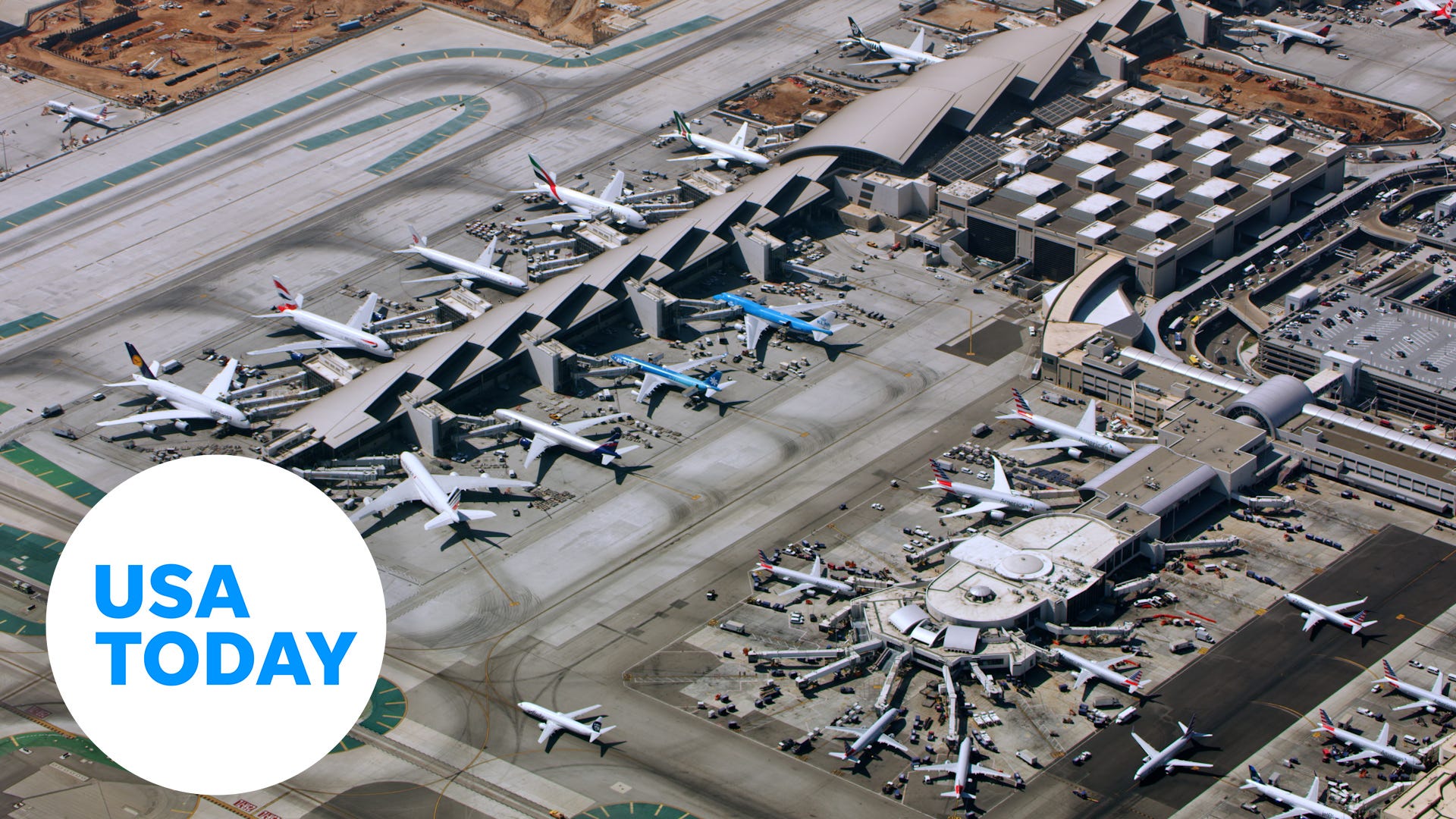Smaller Planes, Big Questions: Why Regional Airlines Are Under The Spotlight

- Regional airlines are smaller carriers that typically operate shorter flights and connect to a larger airline's hub.
- These airlines are subject to the same safety regulations as major carriers, but statistically have a higher incident rate.
- Passengers may not always be aware they are booked on a regional airline, as flights are often marketed under the main carrier's brand.
Regional airlines are in the public consciousness lately in a way that usually only avgeeks think about them.
This year, three high-profile aviation safety incidents involved regional jets: a fatal collision between an American Airlines/PSA Airlines jet and an Army Black Hawk helicopter near Washington, D.C.; a Delta Air Lines/Endeavor Air regional jet that flipped over just after touching down at Toronto's Lester B. Pearson International Airport, and another Delta/Endeavor Air regional jet that clipped its wing against the runway at LaGuardia International Airport in New York.
And on Monday, news broke that two major U.S. regional carriers, Republic Airways and Mesa Air Group, are planning to merge later this year.
As a result, many travelers are taking a closer look at their airline tickets and wondering what, exactly, these regional carriers are. At the end of the day, they are regulated the same way as the mainline airlines (American, Alaska, Delta and United) that they're affiliated with, but that doesn't mean they're exactly the same.
Here's what you need to know if your next trip involves a regional airline.
Regional airlines are carriers that generally operate smaller planes in smaller markets to feed traffic to an airline's hub. The aircraft themselves are often painted to look like part of the major carrier's fleet, and are branded with names like American Eagle, Delta Connection or United Express. Flights under those brands can be operated by a number of companies, which are usually either wholly-owned by the larger airline or under contract with the carrier.
“In today’s environment, it is an airline with generally smaller aircraft up to 76 seats that operates on behalf of a major carrier, or in some cases, several major carriers. And they do so in their livery and with their service standards," Robert W. Mann Jr., a former airline executive officer and current president of R.W. Mann and Co., an independent airline consultancy, told USA TODAY. "From the airline’s perspective, they want you to have the same experience on an airplane operated by one of their partners as you do on one of their airplanes.”
These are the major regional partnerships of U.S. airlines:
American Airlines (American Eagle)
- Envoy Air (wholly owned by American)
- Piedmont Airlines (wholly owned by American)
- PSA Airlines (wholly owned by American)
- Republic Airways (third-party contractor)
- SkyWest Airlines (third-party contractor)
Alaska Airlines
- Horizon Air (wholly-owned by Alaska)
- SkyWest Airlines (third-party contractor)
Delta Air Lines (Delta Connection)
- Endeavor Air (wholly-owned by Delta)
- Republic Airways (third-party contractor)
- SkyWest Airlines (third-party contractor)
United Airlines (United Express)
- CommuteAir (third-party contractor)
- GoJet Airlines (third-party contractor)
- Mesa Airlines (third-party contractor)
- Republic Airways (third-party contractor)
- SkyWest Airlines (third-party contractor)
For many travelers, it can be easy to miss whether a flight is operated by the main airline or one of its regional partners. Even for the third-party contractors, the airline that sells the ticket does everything from setting the price to processing the charge and likely, handling your check-in.
"The average passenger does not realize that they are flying on Endeavor or SkyWest or what have you," William J. McGee, senior fellow for aviation and travel at the American Economic Liberties Project and former airline dispatcher, told USA TODAY. "You are booking on (the major carrier's) branded website, your credit card is charged to that major carrier, you tell the taxi driver or the Uber driver that you are going to that carrier’s terminal, everything in the airport is branded with that major carrier’s branding."
Regional carriers fill what could otherwise be a gap in the aviation network, especially in smaller markets.
Decades ago, under a different regulatory framework in the U.S., independent so-called "commuter" carriers often fed traffic to major airlines from smaller cities. When the airline industry was deregulated in the 1970s and 80s, major airlines shifted their network structure and placed greater value on more direct control over those feeder flights. Many of the commuter carriers folded, but the ones that remained evolved into today's regional airlines, according to Mann.
Staff at regional airlines are often compensated at lower rates than their mainline counterparts, meaning those flights are frequently cheaper to operate for the larger company. While pilot wages at regional airlines have increased in recent years, cabin crew and ground staff wages are still usually significantly lower.
The short answer is yes.
According to Mann, regional airlines are under the same regulations as mainline carriers, so there's "a single level of safety" between the two.
"I don’t have any concerns about flying a regional airline partner," he said. “It just happens to be a smaller airplane, and generally flown in a smaller market."
McGee agreed that he doesn't get nervous flying on regional airlines but acknowledged that he does try to keep things in context.
"We all know statistically how safe the system is, but it’s incumbent upon us if we want to continue to have a safe system, that we look where there could be problems," he said. "There is a higher accident rate with regionals ... that is a statistical fact that we’ve had more problems on the regional side."
Still, McGee doesn't want travelers to worry the next time they fly on a regional jet. He believes it is important for the industry to be transparent about the operator, ensuring that travelers are fully informed about the context of regional flying. Especially after close together, high-profile incidents that involved regional jets, McGee said now's a good time to take a closer look at this aspect of the industry.
"Cumulatively, these events indicate that we need to be more watchful than ever as far as standards: as far as aircraft maintenance, as far as piloting standards, all of this," he said. "My two bullets are: there are more problems at the regionals than the mainlines, that’s a statistical fact. The other is, we don’t want an erosion of standards," so keeping regionals under the same regulations as mainline carriers going forward is an important way to ensure continued safety, according to McGee.
Airlines and third-party booking platforms are required to disclose what carrier is operating a flight when you book, though it may not always be obvious or easy to spot on the booking page. For the most part, because onboard service standards tend to be similar, for many travelers, it may not matter who the operator is.
"I think a lot of people don’t know until they get there, and it’s not a 747 they’re boarding," Mann said. "The degree of knowledge, especially of infrequent travelers, is limited."
As a consumer advocate, McGee expressed hope that airlines will display their disclosures more prominently and that travelers will become better informed about the distinctions between regional and mainline airlines.
"In 2025, we still have a long way to go for complete transparency on when you are flying on one of the three mainlines and when you are flying on one of their partners," he said.
Contributing: Reuters
Zach Wichter is a travel reporter and writes the Cruising Altitude column for USA TODAY. He is based in New York and you can reach him at zwichter@usatoday.com.


